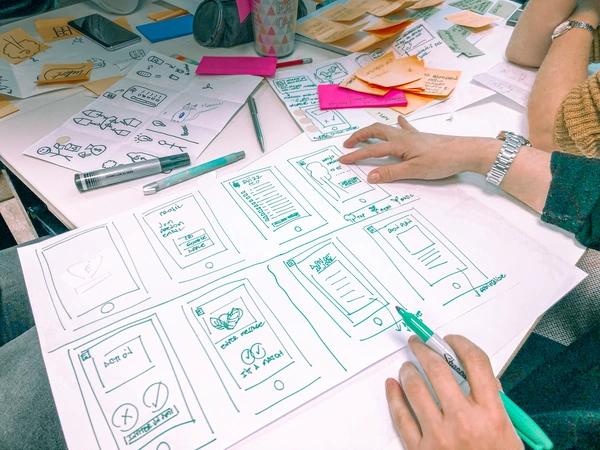The Design Sprint is an agile product development methodology developed by Jake Knapp and his team at Google Ventures. It is a structured, collaborative process. A multidisciplinary team develops, prototypes and tests a product or function within a few days. Design Sprints are therefore also a central element of the innovation method and culture of design thinking.

The Design Sprint is a creative method. In several iterations, a concept is developed, visualized and tested with users based on market research, product analyses and expert knowledge. From a vague idea to a concrete result within days to a few weeks – that's what the Design Sprint can do.

The Design Sprint approach typically includes the following phases:
Understanding and defining the problem: On the first day, the team defines the problem or challenge to be solved and identifies clear goals for the Design Sprint.
Idea generation: In an intensive brainstorming process, various ideas and solution approaches are collected. All team members and process stakeholders contribute their perspectives and expertise to generate a broad pool of ideas.
Decision and prototyping: The team selects the most promising ideas and develops a prototype from them. This prototype can take the form of sketches, wireframes or interactive mockups. The focus is on rapid implementation and visualization of the concepts.
Testing and validation: Potential users test the created prototype to get feedback and insights. For this purpose, testing can take the form of usability tests, interviews or other validated methods.
The special features of the Design Sprint include:
Collaboration and diversity: Involving a multidisciplinary team is beneficial because different ideas and approaches emerge with different expertise and perspectives.
Focused and intensive approach: The Design Sprint is designed for a short time span of a few days to achieve quick results and increase the efficiency of the development process.
User-centered development: The use of prototypes and testing with users ensures that the developed product meets the needs and expectations of the target audience.
Agile adaptation and iteration: The Design Sprint enables feedback to be obtained at an early stage. Based on this, adjustments and iterations are made. Thus, the product improves continuously.
The advantages and benefits of the Design Sprint are:
Rapid development and validation of ideas: The Design Sprint enables ideas to be developed quickly. In addition, initial prototypes are also created and tested directly. This provides early insights into feasibility and relevance.
Effective collaboration and communication: Intense teamwork fosters communication and sharing, which in turn enables a shared vision and direction in the first place.
Risk reduction: Through the use of prototyping and testing with users, potential problems and weaknesses are identified early and can be addressed before actual development.
Promoting innovation and creativity: The Design Sprint encourages creative thought processes and enables innovative approaches to solutions to be developed and tested.
Knapp, J., Zeratsky, J., Kowitz, B. (2016). Sprint: How to Solve Big Problems and Test New Ideas in Just Five Days. Simon & Schuster.